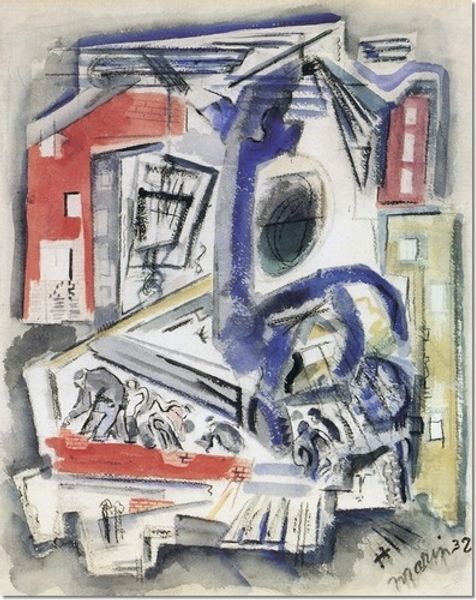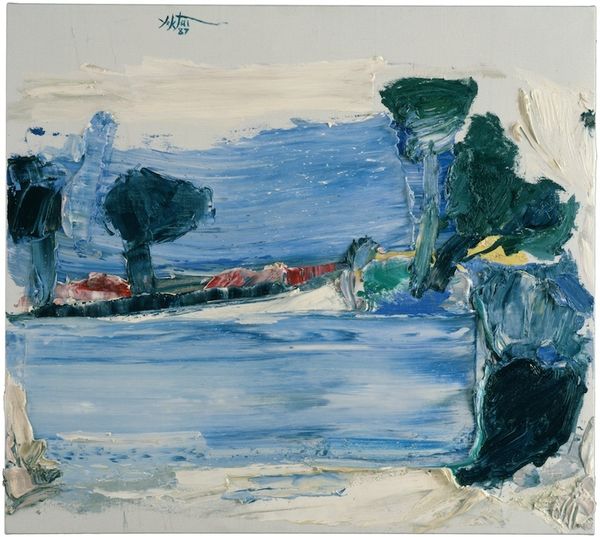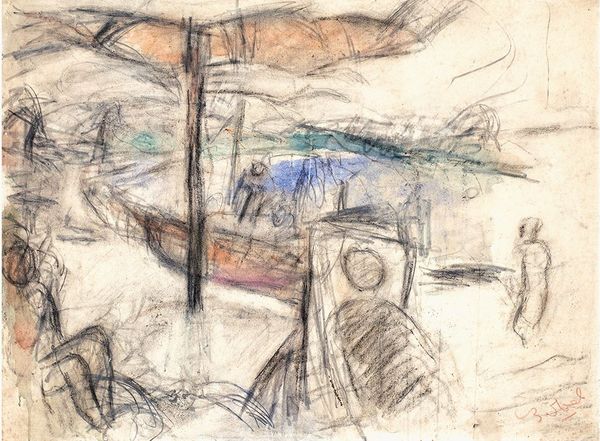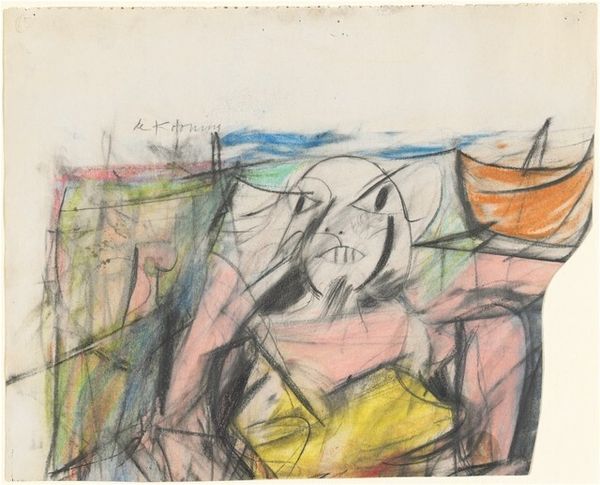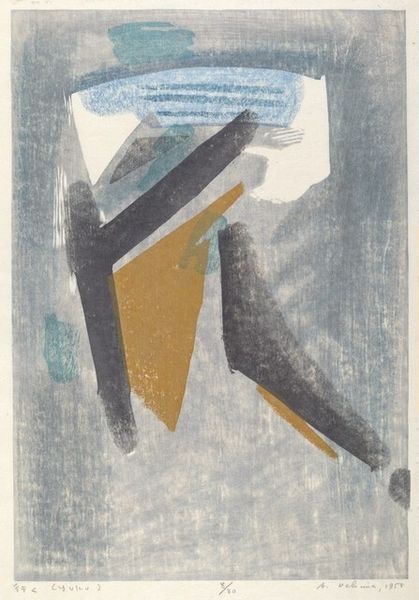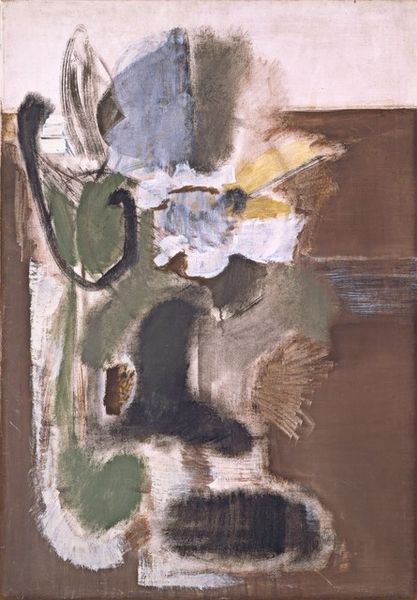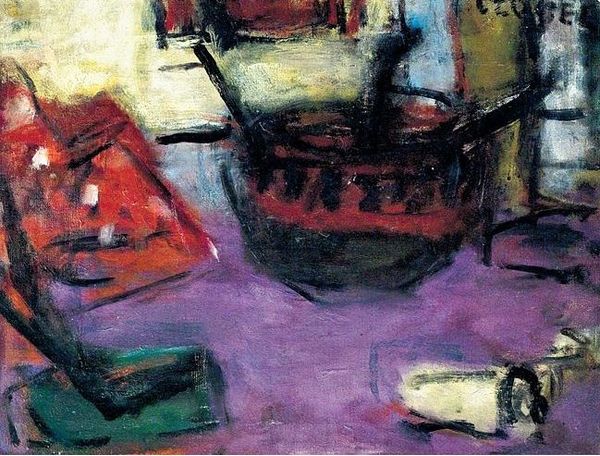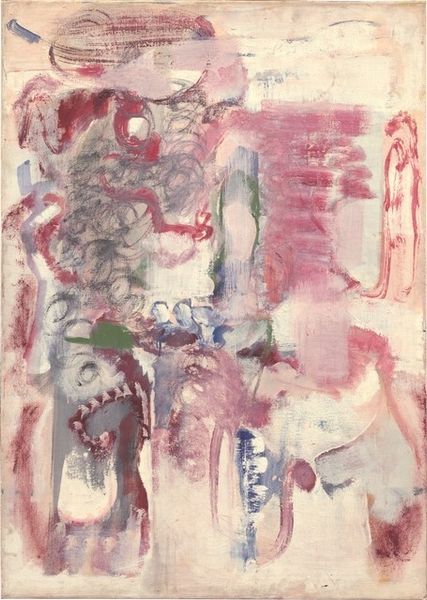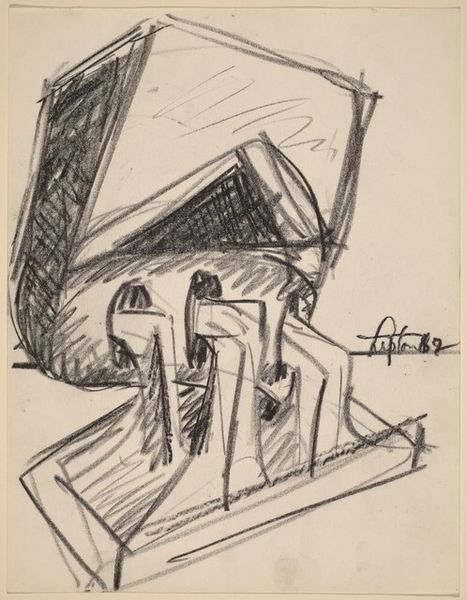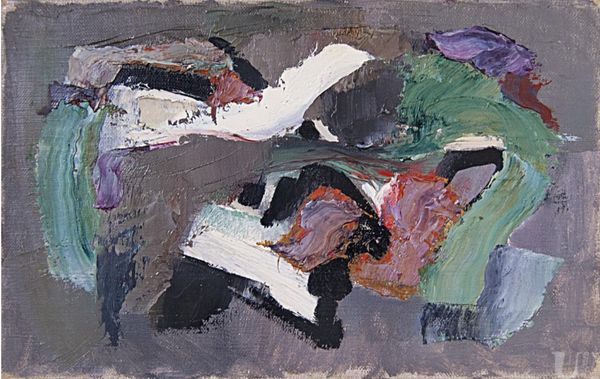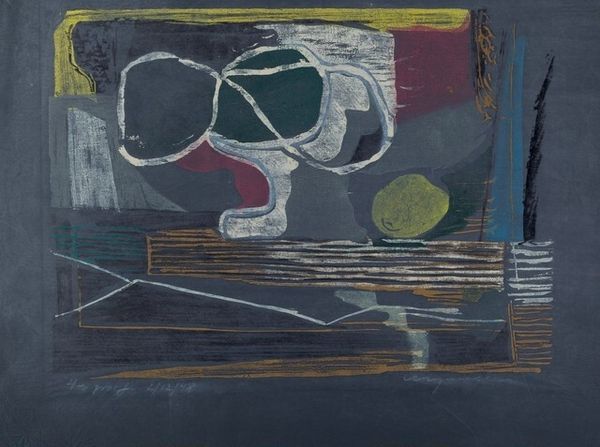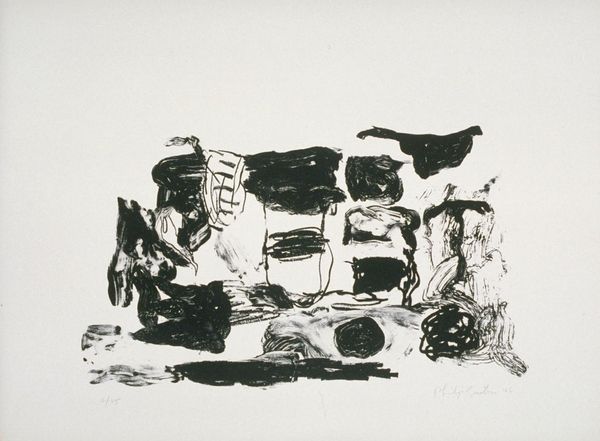
Copyright: John Marin,Fair Use
Editor: This watercolor, "Schooner Yachts, Deer Isle, Maine" by John Marin, dating back to 1928, evokes a sense of breezy motion. The sailboats and the landscape feel somewhat fractured. What draws your attention when you look at this piece? Curator: Immediately, the emphasis on process. Look at how the watercolor medium itself becomes the subject. The drips, the washes, they aren’t just techniques; they're integral to conveying the dynamism Marin seeks. The material’s fluidity mirrors the movement of the water and the boats. It seems like the image captures how it felt to witness, more so than a literal capture. Editor: I see what you mean. So, it's less about accurately depicting yachts and more about showing movement? How does this relate to the socio-historical context? Curator: Precisely. In the 1920s, Marin, like many modernists, challenged academic traditions. Rather than portraying a romanticized, idealized scene, he exposed the very act of painting. Consider the increasing industrialization and speed of modern life; Marin responds with a visual language that reflects this new, accelerated reality. The fractured forms might even subtly echo the disruption brought by technological advancement to traditional labor roles in a place like Deer Isle. Editor: That's fascinating. So the boats aren’t just boats, they are symbols of societal transition. The materiality becomes inherently tied to meaning. Curator: Exactly! By emphasizing the material reality of the painting, Marin pushes us to question not only what we see, but how it's made and what that making signifies in its time. Notice, even the lack of clear representation challenges traditional, often capitalist, views of ownership. The subject, once precious and exclusive, is fractured. Editor: That perspective has reshaped my understanding of the piece! I initially focused on the aesthetic, but understanding the process and context makes it much more compelling. Curator: Indeed. Seeing art through the lens of material production opens up new avenues for interpretation and connects us to the cultural and historical forces that shaped the artwork.
Comments
No comments
Be the first to comment and join the conversation on the ultimate creative platform.


